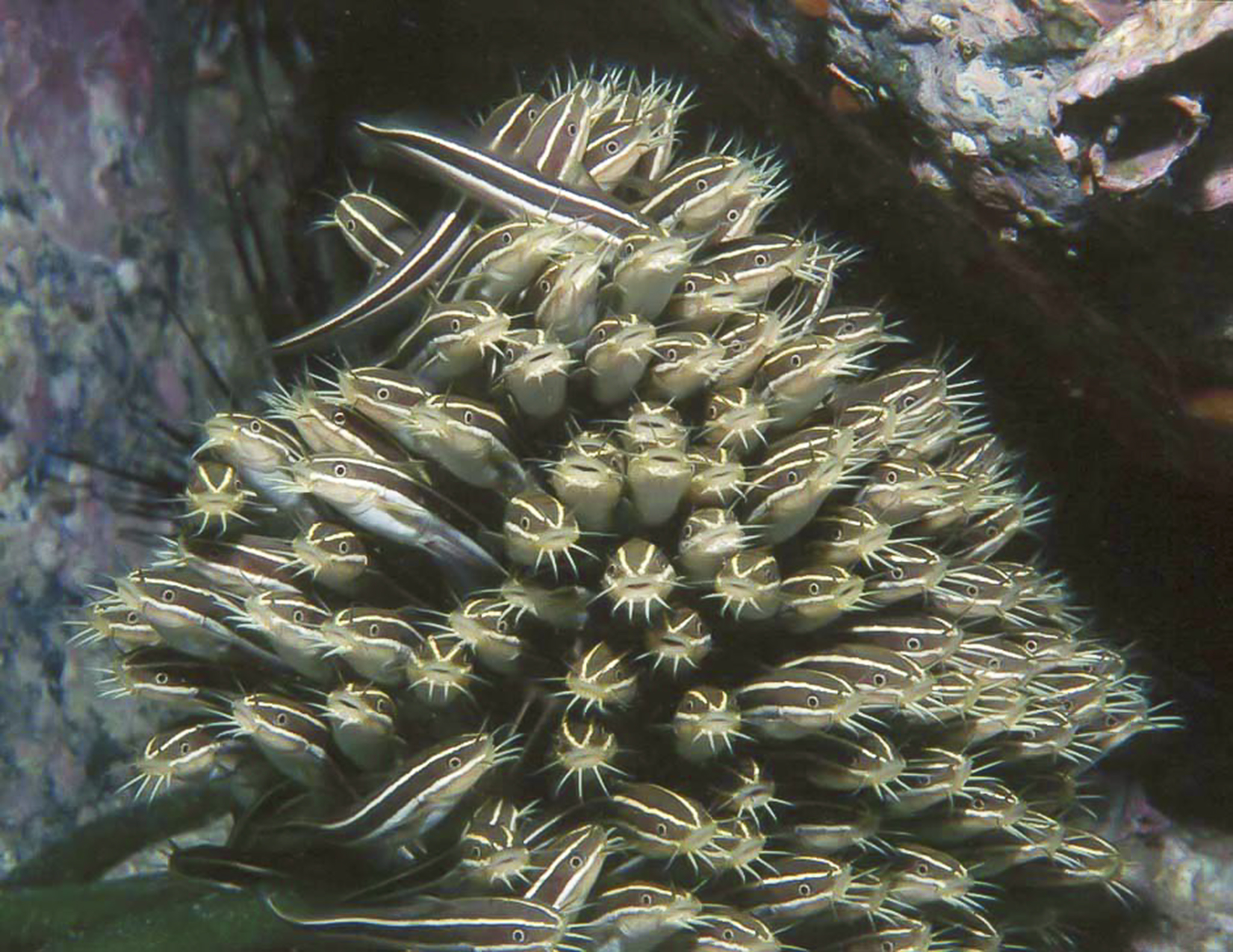Science News
Swimming pH Meters
June 6, 2014
by Molly Michelson

“These fish are like swimming pH meters. They are just as good as a commercial pH meter in the lab.”
Scientist John Caprio is talking about Japanese catfish (Plotosus japonicus)—small, marine catfish that are devilishly good hunters in the night. Like other catfish they use their whiskers, better known as barbels, to find prey.
Barbels house tastebuds for the fish, so the whole ocean (or river for freshwater species) is their smorgasbord. But the Japanese catfish take it one step further.
Caprio and his colleagues discovered that these fish can detect even the slightest variations in pH levels. Acidity is measured by pH on a scale of 0 to 14, where 0 is highly acidic and 14 is highly basic. Distilled water is neutral and right in the middle at 7.0; seawater varies between 8.1 and 8.2. Carbon dioxide lowers pH, or makes water more acidic, evident in carbonated beverages and on a grander scale, ocean acidification.
The scientists found that the catfish can detect a local difference in pH to within 0.1, using only their barbels and lips. But why?
The team wondered if it had something to do with finding their prey. These fish eat polychaete worms that live in tubes or burrows in the mud. While the worms aren’t buried that deep, the catfishes’ barbels don’t work to taste them in the water. The worms may be completely unseen, but they still have to breathe. Worm breath lowers the pH just enough that if a catfish is in the vicinity, it will find the worm.
The researchers confirmed that the catfish were attracted to a location in the aquarium where seawater of a slightly lower pH was being emitted from a small tube even when no worms were present. In addition, the fish became extremely active, searching for food and even bit repeatedly at the end of the tube.
The findings are published this week in Science.
The team is concerned about these fish with rising ocean acidity. “If ocean acidification continues at its same rate, we do not know if marine life will be able adapt to such a rapid alteration in pH,” Caprio says. “It is possible that the sensors could adapt to such a change, but we are not certain that this will happen. As of today, what we know is that these sensors work optimally in the vicinity of pH of 8.2, that of normal seawater. If ocean pH drops much below 8, a number of deleterious events are likely to occur.”
Image: Kagoshima Aquarium